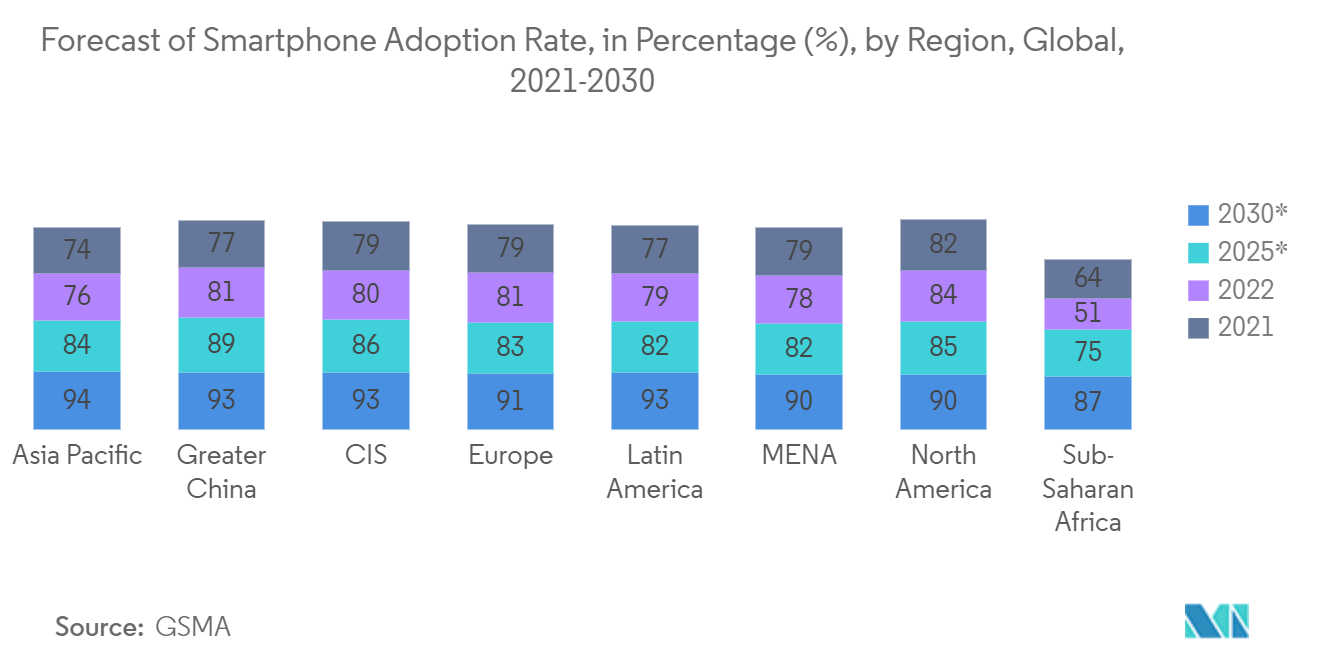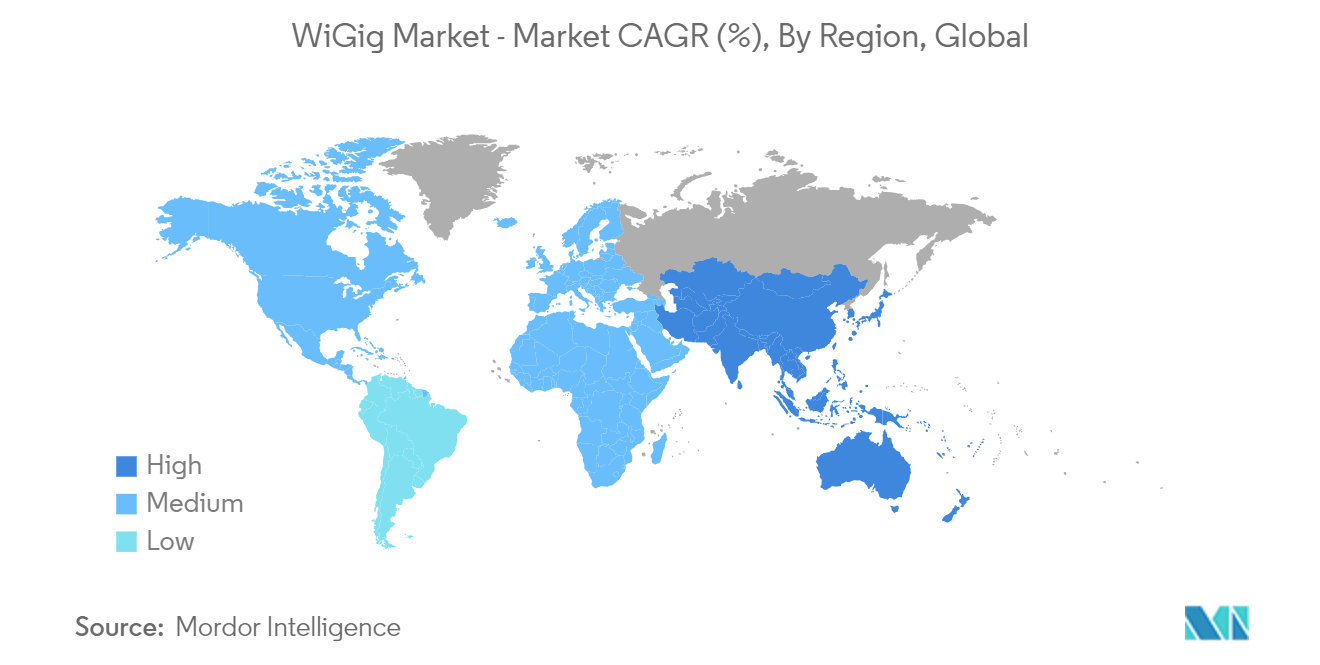Market Trends of WiGig Industry
Display Devices Segment is Expected to Hold Significant Market Share
- Display devices offer various solutions to meet the growing demand for wireless connectivity and seamless integration of displays in various applications, such as head-mounted displays (HMD)(AR), smartphones, VR headsets, and devices with integrated displays, such as PCs and Laptops.
- The proliferation of WiGig-enabled smartphones drives demand for display devices that support wireless connectivity, enabling users to leverage the full potential of their mobile devices for productivity, entertainment, gaming, and collaborative applications. According to GSMA, as of 2023, North America has the maximum smartphone adoption rate, with 84% of total mobile connections. North America is anticipated to see its smartphone adoption rate grow to 89% by 2030, with regions like Eurasia and Asia-Pacific looking forward to significant growth.
- WiGig technology functions at 60 GHz and permits the wireless transfer of information in audio and video format at a speed of up to 5 gigabits per second, which is ten times the present maximum wireless transfer capacity, and that too at one-tenth of the cost. Typically, it supports data transfer within a range of 10 meters. The market is gaining traction due to the ease of operation and high speeds, particularly in the gaming sector.
- WiGig technology is also used to broadcast video signal transmission systems in sports stadiums and mm-wave video signal broadcast systems. The technology could also be used to beam full HD-quality video in real time. It can also be used by notebooks and other computers to wirelessly connect, along with all the development needed for a docking station, including a secondary display and storage computer.
- During the forecast period, short-range applications in the market are expected to be attractive. Screen sharing and virtual Reality (VR) headsets are instances where WiGig is being implemented widely. Companies such as Peraso, Nitero, Qualcomm, Blu Wireless, Tensorcom, and Intel specialize in WiGig-supporting semiconductors. Dell is integrating WiGig in carefully chosen laptops and wireless docking stations. It can wirelessly power a high-resolution virtual reality headset in the same room. The WiGig technology can transfer data at fast enough rates to feed VR imagery from a PC to a VR headset display.

North America is Expected to Hold Significant Market Share
- The high internet penetration and large smartphone users in the region driven by the United States and Canada are expected to drive the demand for high-speed Wi-Fi in gigabytes using WiGig. North America is quickly migrating toward multi-gigabit, residential internet access, primarily using fiber. The economic feasibility of extracting more bandwidth from existing networks using DOCSIS 3.1 is trending with the real opportunity of wireless and speed, by which the demand for WiGig is increasing in this region.
- In July 2023, the FCC adopted new regulations to encourage the development of creative devices that do not require a license. These rules apply to unlicensed radar and other sensor devices that use the 60 GHz band (between 57-71 GHz). The goal is to give device makers more freedom in their designs and how they operate while also enabling new applications like technology to detect children left in hot cars. Importantly, these rules ensure that this band can still be shared with other unlicensed technologies, like WiGig, which supports VR and XR applications.
- The video game industry in Canada is booming. The Entertainment Software Association of Canada reported that 63% of Canadians, over 24 million people, are gamers. This trend is particularly strong among younger demographics, with nearly 9 out of 10 (89%) kids and teens (aged 6-17) playing video games, compared to 61% of adults (aged 18-64). The survey did not include data for Canadians over 65. The increasing popularity of video games in the region provides opportunities for the market to grow.
- In March 2024, Miliwave Co. Ltd announced new Fixed-Wireless products using Peraso's X720 chipset. In addition, Miliwave opened an office in North America to service the growing WISP market. Utilizing the license-free 60 GHz band, Miliwave's airPATH 60 products provide solutions for applications demanding reliable, multi-gigabit data connectivity.
- Moreover, in August 2023, STORDIS, one of the pioneering providers of open networking solutions, announced a partnership with Tachyon Networks, an industry leader in 60 GHz wireless networking technology. This collaboration would enable STORDIS to distribute Tachyon Networks' innovative products across Europe and deliver substantial benefits for customers, enhancing network efficiency and flexibility and facilitating faster, easier, and more cost-effective installations.


